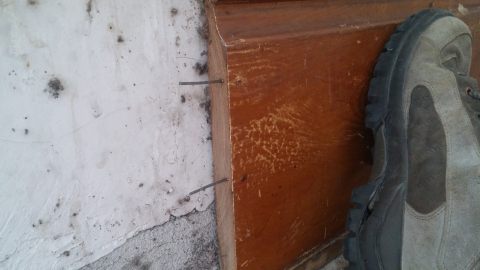Reno 2019: #1. Craftsmanship in the late Victorian era
February 12, 2019

It was a long, wide baseboard in a bedroom of the brick house which hadn’t been disturbed since the house was built in approximately 1898. The wood is chestnut. Virtually all of the wood in the structure of the house is chestnut. The magnificent, sweeping ash staircase is chestnut, though the bannister is cherry. The trim around the towering windows is chestnut. The floor joists and the two layers of 1″ sheeting behind the brick exterior are chestnut. Even the loose floor in the attic is made of clear, straight chestnut boards.
Anyway, I was prying on this baseboard to make way for new wiring. As I worked at it I noticed that the final two feet had been joined to the 12′ board with a very clever butt joint shown in the photo above. Those aren’t the usual horseshoe-type flat nails used elsewhere in the building. These are true square nails, and much smaller than the others. I guess they must have been the finishing nails of the time. These are the only two I have encountered in this building, despite extensive renovations since 1966.
Now look at the photo and determine what the guy did with the nails. He clearly drove each into the wood, persuaded it to turn 90 degrees, and keep going straight. This was no lucky accident: both surfaces of the end grain have been planed for an exact fit. It was only as the joint opened from prying that I realized it was there. The baseboard did not rely on nails into a stud for support at that point.
This craftsman with a pair of nails and a hand plane did what today we would use a biscuit jointer or dowels to accomplish. The same guy fitted the curves of the ogee moulding at the top of the baseboard, not with a coping saw, but with a gouge, a very sharp, scooping wood chisel.
Then there’s the knob-and-tube wiring, installed in the summer of 1939. My job was to pull up tongue-and-groove pine boards to expose the wires from above. When my friend looked at the array of wiring in the cavity under the floor of a bedroom, everything lined up precisely, all of the ceramic insulators exactly the same, every joint done with pride, he exclaimed: “These guys were masons!” Then we set about wrecking their work. Progress.